Sample Subcontractor Agreements
-
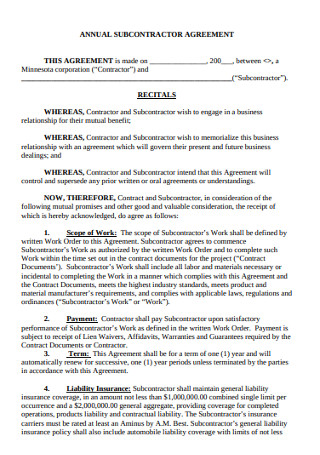
Annual Subcontractor Agreement
download now -
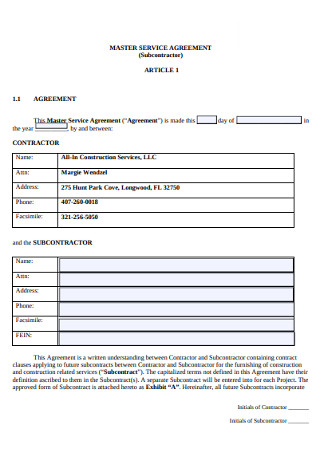
Master Subcontractor Service Agreement
download now -
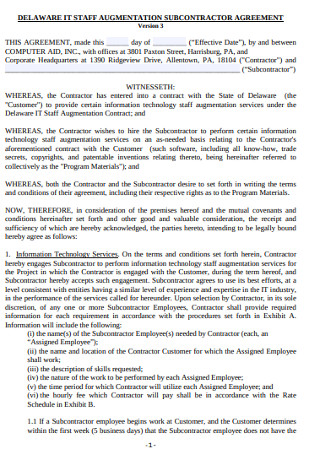
Staff Augmentation Subcontractor Agreement
download now -
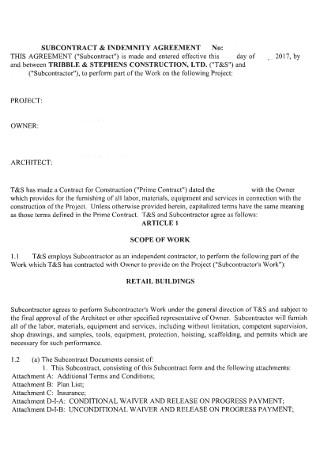
Subcontractor Indemnity Agreement
download now -
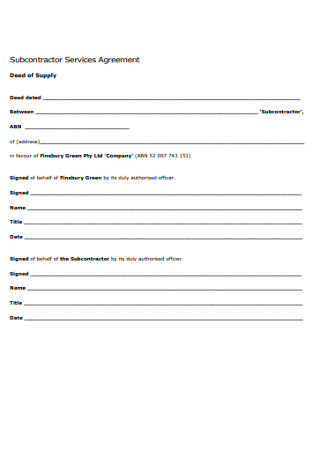
Subcontractor Services Agreement
download now -

Subcontractor Compliance Agreement
download now -
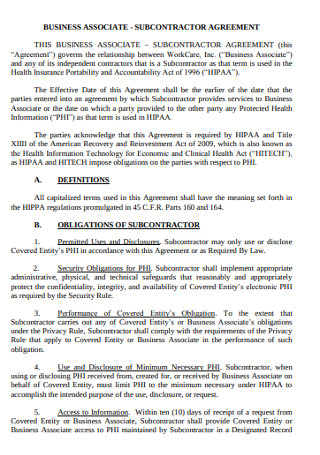
Business Associate Subcontractor Agreement
download now -

Subcontractor Insurance Agreement
download now -

Assistant Subcontractor Agreement
download now -

Agreement Between Contractor and Subcontractor
download now -
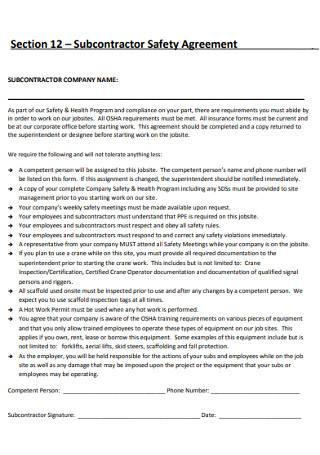
Subcontractor Safety Agreement
download now -
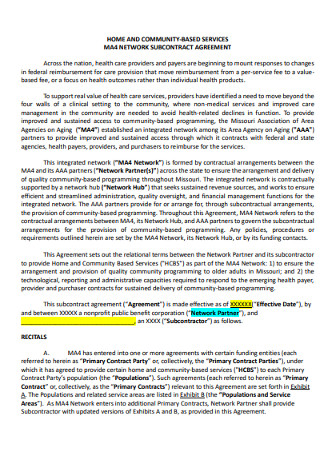
Network Subcontractor Agreement
download now -
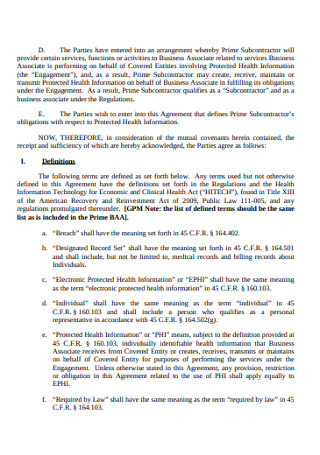
Subcontractor Business Associate Agreement
download now -
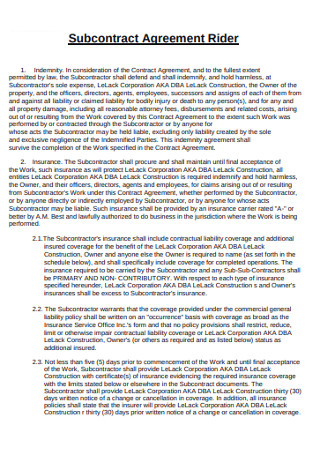
Subcontract Agreement Rider
download now -
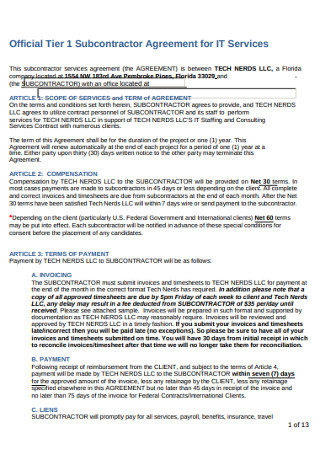
Subcontractor Agreement for IT Services
download now -
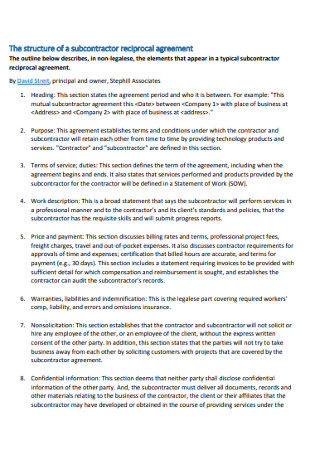
Subcontractor Reciprocal Agreement
download now -
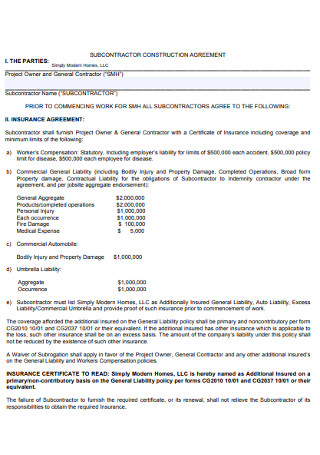
Subcontractor Constructor Agreement
download now -

Subcontractor or Purchase Agreement Matrix
download now -
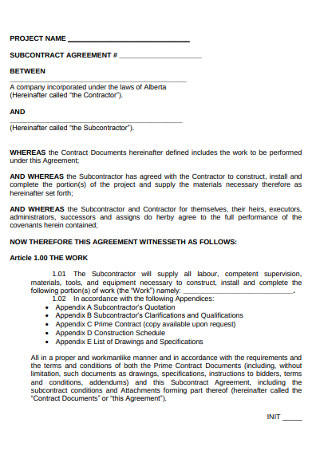
Subcontractor Project Agreement
download now -

Independent Subcontractor Services Agreement
download now -
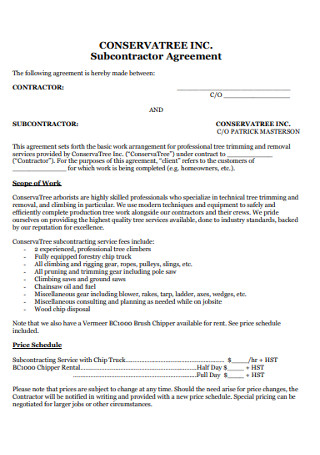
Conservatree Subcontractor Agreement
download now -
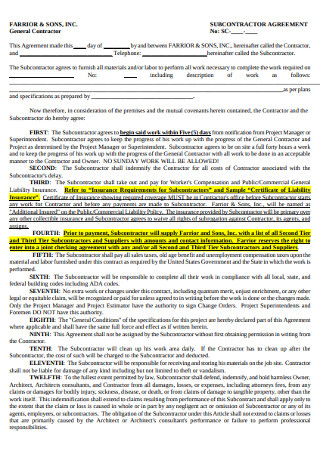
General Subcontractor Agreement
download now -
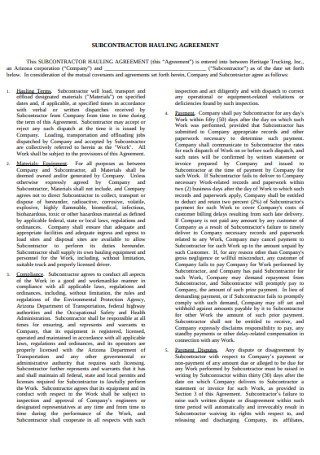
Subcontractor Hauling Agreement
download now -
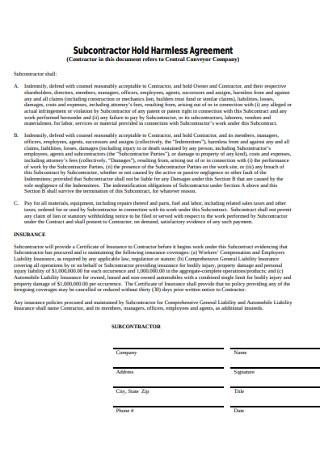
Subcontractor Hold Harmless Agreement
download now -
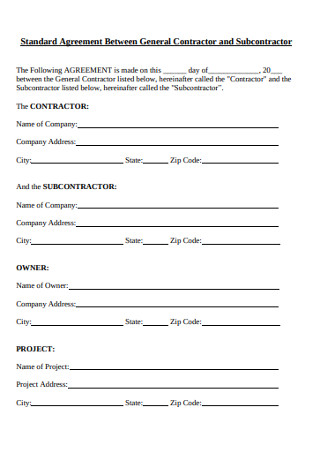
Standard Subcontractor Agreement
download now -
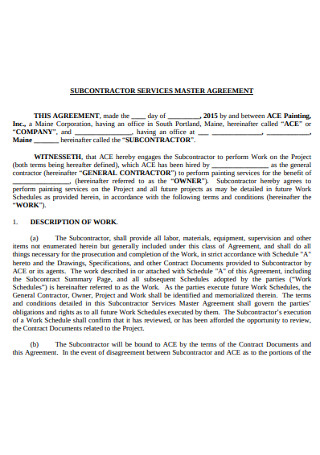
Subcontractor Service Master Agreement
download now -
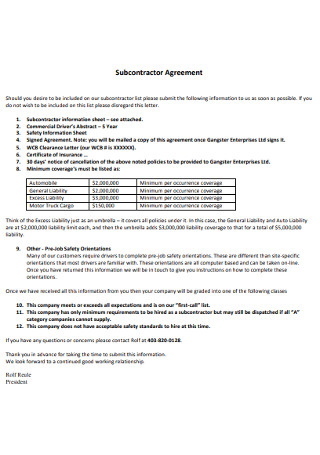
Subcontractor Enterprise Agreement
download now -
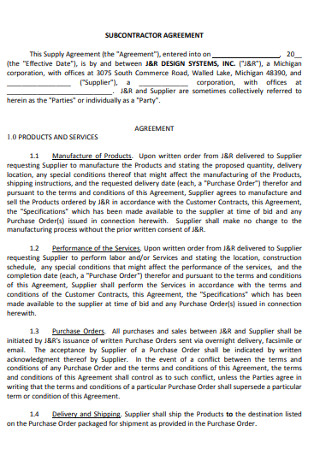
Simple Subcontractor Agreement
download now -
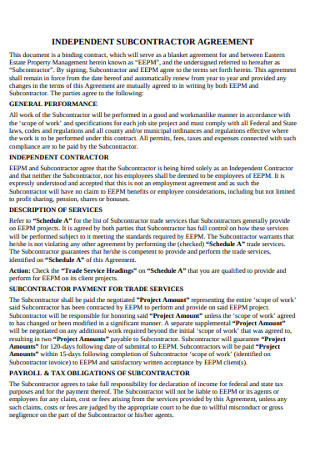
Sample Independent Subcontractor Agreement
download now -
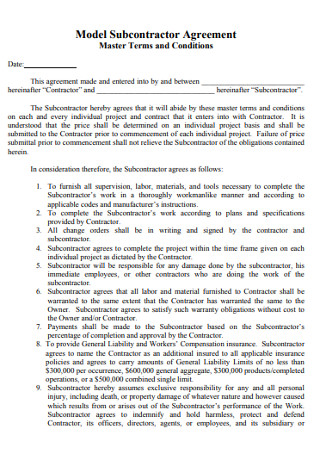
Model Subcontractor Agreement
download now -
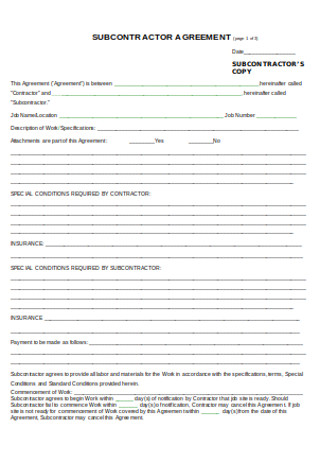
Subcontractor Agreement in DOC
download now -
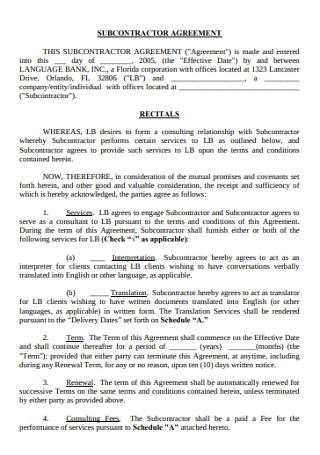
Basic Subcontractor Agreement
download now -
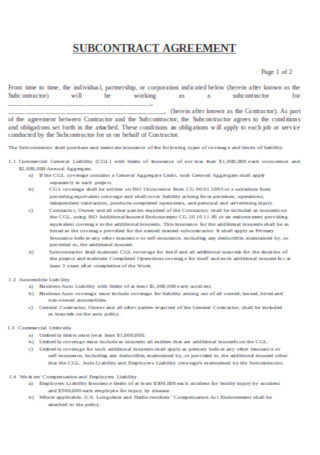
Annual Subcontractor Agreement Template
download now -
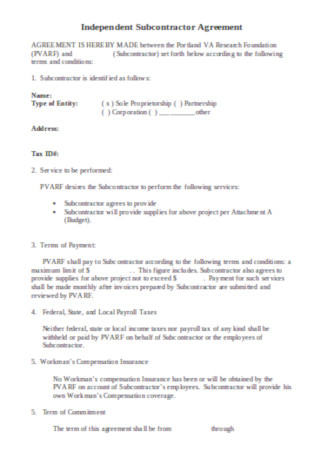
Sample Independent Subcontractor Agreement
download now
What Is a Subcontractor Agreement?
When we first think about subcontractor agreements, the first people to pop out of our minds are basically contractors. Subcontractor agreements should be viewed as a general term because they’re not limited to contractors but are also for other project holders. This type of agreement is a legal contract between a project manager and a subcontractor. The subcontractor assists them in completing a particular project. Subcontractor agreements should then be taken into account when considering a project proposal with workers outside your company.
The agreement will protect you as a project owner and even those who work for you. The reason for this lies in the outline of the work, the timeline, and the expenses given in the agreement. Though it may seem that a subcontractor agreement works only for project managers or contractors, in reality, it can also be beneficial for subcontractors. By carefully reading the provided clauses within the agreement, the subcontractor may willingly decline to risky statements found within the paperwork.
What are the Different Embodiments of Subcontractor Agreements?
As mentioned earlier, subcontractor agreements are not only applicable to contractors. Here are some examples of Subcontractor Agreements applied in construction and in other fields of work:
How to Develop your own Subcontractor Agreement
In simple terms, contracting presumes that the client is directly related to the service provider, while subcontracting involves a client hiring an agency, company, or individual to hire another person for the task. Identifying what your services are will help you develop your own subcontractor agreement. With that in mind, let us pinpoint the important parts of a standard subcontractor agreement in a contractor-subcontractor agreement:
1. Provide Basic Information and Definition of Terms
Here is some basic information required in a subcontractor agreement: the date when the project would effectuate, the expected date of project fulfillment, the names, the corporation, and the address of both contractor and subcontractor. Also, there must be a definition of terms in the earlier portion of the agreement. This is essential so both parties will have the same understanding of some technical terminologies written within the contract.
2. Include Job Authorization and Orders
To enforce your contract and agreement you have to permit the subcontractor for the operation and the subcontractor should agree to this authorization. Furthermore, the details relating to the job should consist of the description of the job, schedule of deliverables, the time span of services, payment rate per hour, and detailed pricing for every service.
3. List the Details for Remuneration
Compensation for the following should be part of the contract:
Extra Labor. The contractor is compelled to compensate for the extra labor done by the subcontractor. Payment compensation for employees under the contractor is mandatory as long as it is specified in the agreement.
Transportation. If travel is requisite and the subcontractor seeks reimbursement from the contractor, the contractor should be informed beforehand. Once this is approved, the exact cost for travel will be reimbursed.
Tax. Some necessary taxes should be reimbursed by the contractor.
4. Supply an Invoice and Include the Terms for Payment
An Invoice is a record of services provided by the subcontractor and is a statement that sums up all the payment fees. The subcontractor shall account for a different invoice per task. An invoice will only be acceptable if it is according to the written and agreed Job Order. It is the contractor’s role to pay the subcontractor a few days after an invoice is approved.
5. Don’t Forget the Rights for Intellectual Property
Intellectual Property Rights are rights appointed to individuals for their creativity. Industrial property is what is mainly protected in a subcontractor agreement. Under this section of the agreement, a company should incorporate retention so that both parties will retain every profit, title, and right according to a pre-existing intellectual property right. The subcontractor is not allowed to apply a pre-existing right within the agreement if it comes from a third party.
A license to absorb Pre-existing intellectual rights into deliverables should be granted to the contractor. A subcontractor is not allowed to include anything from a third party right being integrated into the provision except if particular components were specified by the subcontractor, third party documents were identified, and permission was given by the contractor. After that, all deliverables shall be owned by the contractor regardless of pre-existing rights. Complete rights to the deliverables will be vouchsafed to the contractor without any resistance from the subcontractor. Apply contractor rights because the subcontractor is not permitted to any profit, title, and right of the contractor’s intellectual property unless necessary to accomplish the goal.
6. State the Grounds for Termination
A contractor has the power to terminate the contract without being held liable after an early notice is sent to the subcontractor. Also, the contractor may rid himself of the agreement if the job orders are not fulfilled by the subcontractor based on the agreement. On the part of the subcontractor, he should be given at least 10 days to correct his mistakes and failures after the notice is given.
Once the termination letter is issued, the subcontractor will provide the contractor with an update of the work that has been partially completed. Payment from the contractor shall be according to the subcontractor’s finished work. All equipment provided by the contractor enclosed in the agreement shall be returned by the subcontractor.
7. Set Rules for Confidential Information
Also known as the NDA or non-disclosure agreement, the main purpose of confidentiality in agreements is to protect relevant information that is exchanged between the parties involved. Here are the different types of NDA: The one-sided NDA which is used when only one party is carrying the protected information, and the reciprocated NDA which is an agreement used when two parties are carrying the information.
A subcontractor should not disclose any of the following confidential information: the agreement, the customer and contractor relationship, monetary information, list of customer names, marketing strategies, documents, methods, development, research, and more. There are cases in which a contractor is warranted by the subcontractor to disclose important information without being held responsible. Restriction can only be applied if the subcontractor has an agreement with the contractor of information confidentiality.
At some point of a contractor, individual, or a project owner’s life, he will have to deal with subcontractors to help him with some projects. A project that needs to be accomplished must be guided by a written and tangible agreement or contract between the parties involved. In fact, a subcontractor agreement will help both the contractor and subcontractor to legally deal with unforeseen issues that may come up along the process. Every contractor and project owner should practice using subcontractor agreements to keep their projects right on track. In addition, through this agreement, subcontractors will also know what their commitments are as service providers. It’s always better to be safe than sorry.
